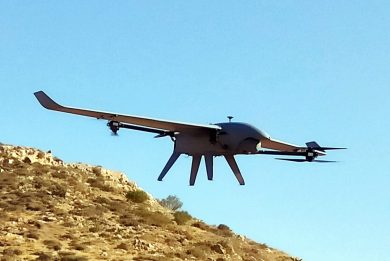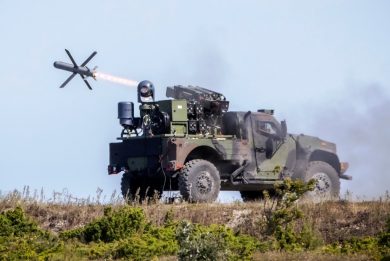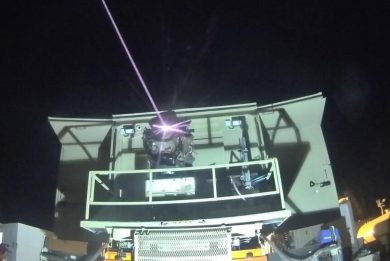Orbiter 2, from ISR to Loitering Munition, the Aeronautics Sensor-to-Shooter mission package
Leveraging its Orbiter 2 aerial platform Aeronautics of Israel developed a sensor-to-shooter mission package that includes the airframe in the former ISR (Intelligence Surveillance Reconnaissance) version and the new Loitering Munition version
“We are investing heavily in loitering munitions, which are part of our company strategy,” Dan Slasky, President and CEO of the Aeronautics Group tells EDR On-Line introducing the latest development of the group, now part of the Rafael ecosystem, adding that “there is more to come.”
The Aeronautics concept is to develop a sensor-to-shooter system that exploits the same platform, one for the ISR mission, which task is to find and identify targets, followed by the attack one, the loitering munition. These share the same ground control station and the same software, as well as the same take-off means and spares, considerably reducing the logistic footprint as well as training issues. This brings to a very streamlined connection between the sensor and the shooter element.
“Developing the Loitering Munition version of the Orbiter 2, we combined the two variants into a single operational concept,” Dan Slasky explains, underlining how much the Orbiter 2 is a battle proven platform.
Aeronautics already had in its portfolio a loitering munition, the Orbiter 1K. The Orbiter 2 LM incorporates numerous improvements over the 1K, also derived from the Orbiter 2, among which automatic target recognition algorithms, advanced communications with stringer encryption, the capacity to operate in GPS-denied areas, and the same control software of the Orbiter 2. All this allows launching the system also into nearly unknown areas. No details were provided on the system used to operate in GPS-denied areas, but we were told that “the system is battle proven in more than one place.”
With a 13 kg maximum take-off mass, it carries the same 3 kg fragmentation warhead of the Orbiter 1K, “which is battle proven and gave us very good feedback from the users,” Dan Slasky tells us. With a 0.9 metres length and a 2.9 metres wingspan with winglets, it is electrically powered, the motor activating the two-blade rear pushing propeller, which generates a very low thermal and acoustic signature. The Orbiter 2 LM reaches a maximum speed of 50 knots and has an endurance of 2.5 hours, this allowing it to find time critical targets circling for a long time over the intended area, the operational altitude above ground level being between 500 and 3,000 ft. This also allows it to provide battle damage assessment/bomb damage indication, to eventually reiterate the attack with a second munition if the first hit proved to be insufficient to neutralise the target. Maximum launch altitude is 13,000 ft and maximum flight altitude is 16,000 ft above sea level. The Orbiter 2 LM can fly in wind guts up to 40 knots, in temperatures from -20°C to+49°C, and in rainfall up to 5 mm per hour. The data link installed ensures a range up to 50 km.
The Sensor-to-Shooter package proposed by Aeronautics contains some Orbiter 2 ISR and “many more” LM items, EDR On-Line understanding that the exact mix is mostly dictated by customers’ choice. For example, some customers asked a higher number of ISR systems that are mostly used for training, bringing the mission to the final dive against a target to then pull-up before the hit.
As for the systems status, “We have hundreds of units under order and new customers coming, among them some major ones, production being at full steam,” Dan Slasky concludes.
And there is more to come . . .
Photos courtesy Aeronautics





